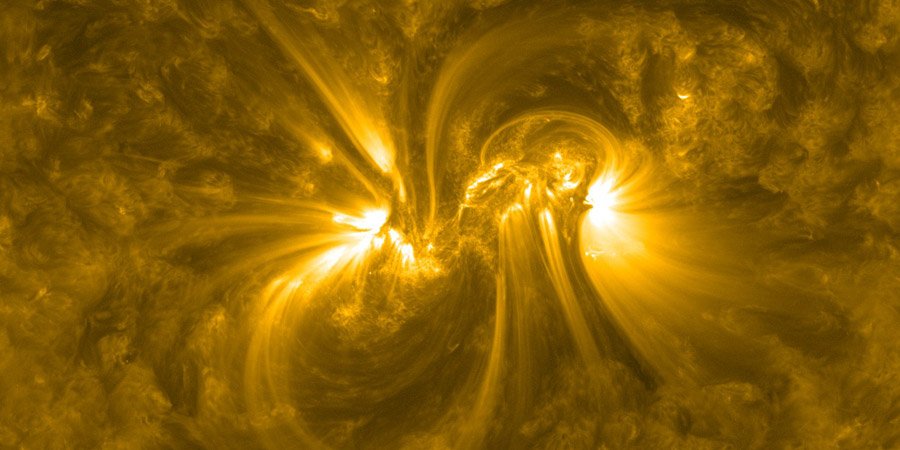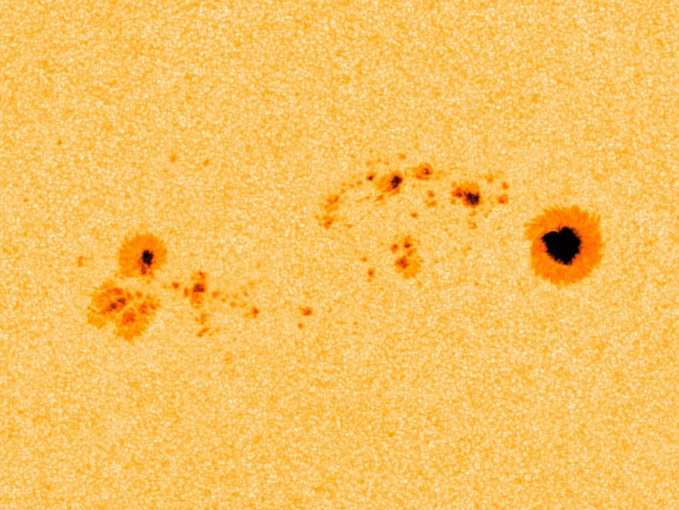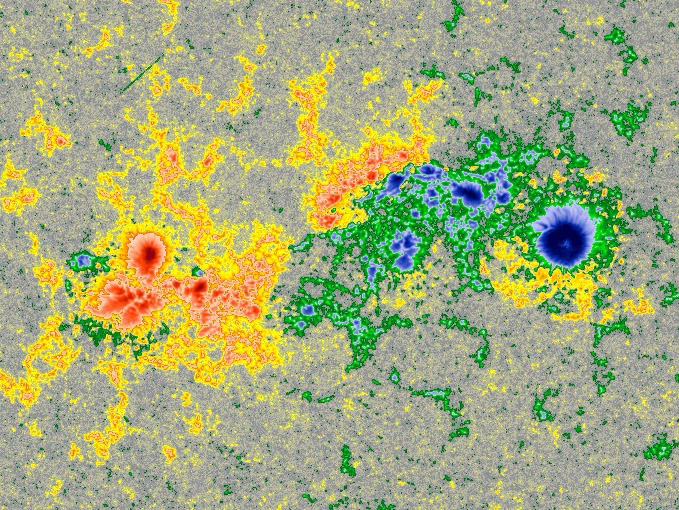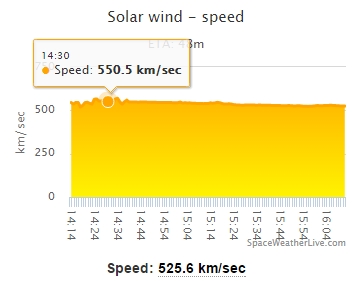Sunspot region 2473, Site upgrades
Sunday, 27 December 2015 16:54 UTC

We hope everyone had a great Christmas! Solar activity is fairly quiet at the moment despite the presence of sunspot region 2473. Is it still capable of producing M-class activity? We have also been busy updating the website and we hope you enjoy the new graphs! Keep on reading to find out more.
Sunspot region 2473
Sunspot region 2473 is currently the most complex sunspot region on the Earth-facing solar disk and it is actually in a great position right now to launch coronal mass ejections our way. The problem is, is that it's fairly quiet and there haven't been any M-class solar flares since an M1.1 solar flare on the 24th.
The big question is: can it produce an M-class solar flare in the next 48 hours while it's in an excellent Earth-facing position? Well, to be honest... the way this sunspot region is looking right now I wouldn't count too much on it. It has been showing signs of decay and there used to be a delta area in it's intermediate layout but that looks to be in the process of ripping itself apart. C-class solar flares remain likely but we want more magnetic mixing for strong solar flares. On the images below you can see how the opposite polarities (red and blue) are fairly seperated. That is something we don't want to see if we want strong solar flares. Let's hope we see some new flux emergence in the coming hours and more magnetic mixing!


Site upgrades
We have also been busy this month with some website upgrades. We launched a freshened up layout, rearranging some stuff and make it even prettier then before. We hope you like our new look.
The biggest change here on SpaceWeatherLive that you might have noticed already must have been the graphs. We have brought in some new, neat and fancy looking graphs with some interesting features: when hovering over the graph with your mouse or with your finger on a smartphone you will be able to see the exact values of the specified time. We think these new graphs are awesome and hope you agree they look better than ever before! Leave a comment if you wish, we love to hear your opinion!
Advent calendar
Also be sure to check our advent calendar while you still can! All the presents have been revealed and are yours to open! Enjoy!
Thank you for reading this article! Did you have any trouble with the technical terms used in this article? Our help section is the place to be where you can find in-depth articles, a FAQ and a list with common abbreviations. Still puzzled? Just post on our forum where we will help you the best we can!
Latest news
Latest forum messages
Support SpaceWeatherLive.com!
A lot of people come to SpaceWeatherLive to follow the Sun's activity or if there is aurora to be seen, but with more traffic comes higher server costs. Consider a donation if you enjoy SpaceWeatherLive so we can keep the website online!

Space weather facts
| Last X-flare | 2025/03/28 | X1.1 |
| Last M-flare | 2025/04/01 | M2.4 |
| Last geomagnetic storm | 2025/03/27 | Kp5 (G1) |
| Spotless days | |
|---|---|
| Last spotless day | 2022/06/08 |
| Monthly mean Sunspot Number | |
|---|---|
| February 2025 | 154.6 +17.6 |
| April 2025 | 147 -7.6 |
| Last 30 days | 128.8 -21.8 |



